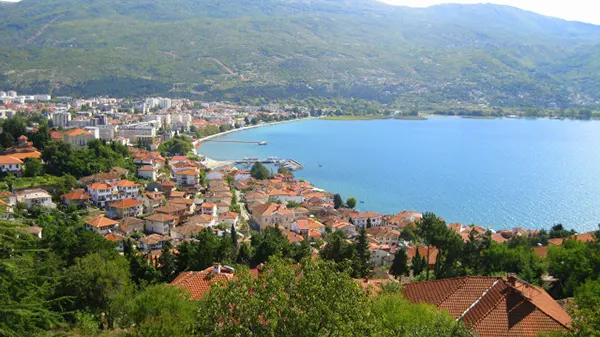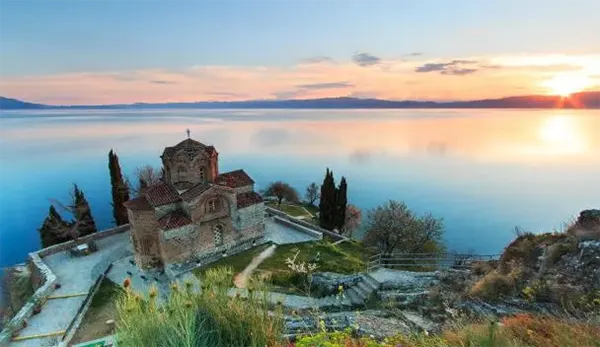
Ohrid, North Macedonia — A Timeless Cultural Treasure of the Balkans
Ohrid is one of the oldest continuously inhabited settlements in Europe, a lakeside city where early Christian heritage, medieval architecture and natural beauty form a rare cultural landscape. By 2025 the city remains an important centre of history, archaeology and regional traditions, attracting travellers interested in heritage rather than commercial tourism.
The Historical Identity of Ohrid
The city’s development spans several civilisations, beginning with ancient Lychnidos, which flourished under Hellenistic and Roman rule. Its strategic location contributed to its growth as a regional seat of learning, trade and religious life. Archaeological sites continue to broaden understanding of how these cultures shaped the settlement’s early urban fabric.
During the Middle Ages Ohrid gained significance as a centre of Slavic literacy. The Ohrid Literary School functioned as a major institution where religious and educational texts were produced, contributing to the spread of literacy throughout the region. Many surviving manuscripts confirm the city’s key role in cultural formation across the Balkans.
Ohrid’s architectural monuments illustrate its long past. Among them are preserved city fortifications, early basilicas and medieval churches decorated with frescos painted by local and regional masters. This combination of heritage elements led to its joint inscription (city and lake) on the UNESCO World Heritage List.
The Legacy Preserved in Monuments
A notable landmark is the Church of St. Sophia, a significant medieval structure featuring well-preserved fresco cycles from the eleventh and thirteenth centuries. These compositions present stylistic features characteristic of Byzantine art and remain an essential reference for researchers studying regional iconography.
Another site of high importance is Samuel’s Fortress, dominating the city from its elevated position. The fortification, partially restored in recent years, allows visitors to observe the layout of the old town and the surrounding lake. Its construction reflects the political developments of the First Bulgarian Empire and subsequent historical periods.
Equally recognised is the Church of St. John at Kaneo, standing on a rocky headland overlooking Lake Ohrid. Its architectural proportions and picturesque setting have made it one of the most documented historic buildings in North Macedonia, often used in academic publications focused on medieval ecclesiastical design.
The Natural Landscape Around Lake Ohrid
Lake Ohrid is among the oldest tectonic lakes in the world, with an estimated age of more than one million years. Its unique ecosystem includes numerous endemic species, studied by biologists and environmental specialists from various European research institutions. Preservation programmes active in 2025 continue to monitor water quality and biodiversity.
The lake’s depth and clarity contribute to its ecological value. Scientific surveys reveal stable deep-water habitats that support species not found elsewhere. These findings underline the importance of environmental protection efforts, which aim to limit pollution and regulate development around the shoreline.
Areas around the lake provide opportunities for hiking, cycling and observing the region’s natural features. Paths around the old town lead to viewpoints overlooking the water, while forested slopes in nearby national parks offer access to diverse landscapes. Seasonal conditions influence the local environment, making spring and autumn ideal for outdoor activities.
The Balance Between Tourism and Conservation
Local authorities in recent years have implemented measures to reduce environmental pressure on Lake Ohrid. These include monitoring construction activities, improving waste management systems and collaborating with international organisations specialising in conservation strategies. Such work aims to safeguard both cultural and natural heritage.
Educational initiatives raise awareness among residents and visitors regarding the lake’s ecological sensitivity. Informational boards and guided programmes help explain how human behaviour influences water quality, species preservation and the overall sustainability of the area. This approach supports long-term preservation.
The balance between visitor interest and conservation is an ongoing process. Stakeholders continue to prioritise responsible policies, ensuring that cultural monuments and natural ecosystems remain protected for future generations. By 2025 this approach is considered one of the most effective regional preservation models.

Modern Ohrid and Local Traditions
Ohrid maintains strong cultural traditions rooted in crafts, religious practices and seasonal festivities. Local artisans remain especially recognised for producing Ohrid pearls, created using a unique process passed from generation to generation. This craft contributes to the city’s cultural identity and economic life.
The town centre hosts events focusing on music, theatre and literature. Among the most established is the Ohrid Summer Festival, which continues to attract performers from various countries. Performances often take place in historic settings, creating a meaningful connection between contemporary artistic expression and the city’s cultural background.
Daily life in Ohrid blends heritage with modernity. Markets feature regional products, while family-run establishments preserve traditional recipes and hospitality customs. These elements form an authentic representation of local culture, valued by visitors seeking insight into the everyday life of a historic Balkan community.
The Role of Ohrid in North Macedonian Cultural Identity
Ohrid remains a symbolic centre in the national narrative of North Macedonia. Its historical achievements, including contributions to literacy and ecclesiastical culture, hold a prominent place in educational materials and academic research. This heritage reinforces the country’s identity within the wider Balkan context.
Institutions in Ohrid collaborate with national museums and universities to document and preserve cultural artefacts. Research programmes focus on manuscript conservation, medieval architecture and ethnographic heritage. These initiatives enhance understanding of regional history and promote informed cultural preservation.
By 2025 Ohrid continues to demonstrate how historic cities can maintain relevance while respecting their heritage. Its development model shows that sustainable management, community involvement and cultural research contribute to long-term stability and international recognition.
Popular articles
-
Outer Islands Seychelles: The Un...
The northern segment of the Outer …

-
Ohrid, North Macedonia — A Timel...
Ohrid is one of the oldest …

-
The biggest and most famous casinos
In recent times, fans of the …

